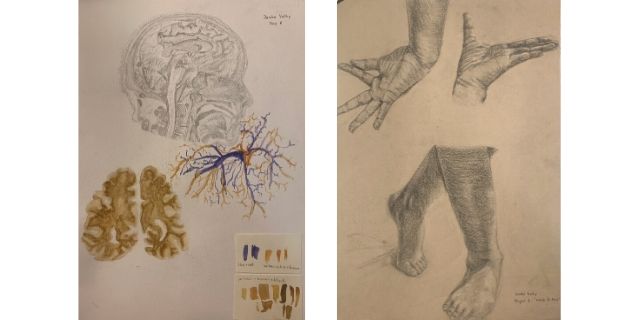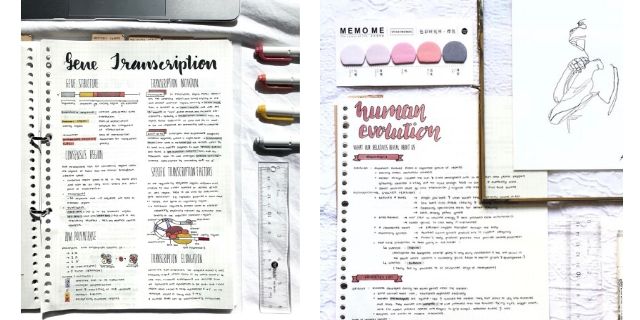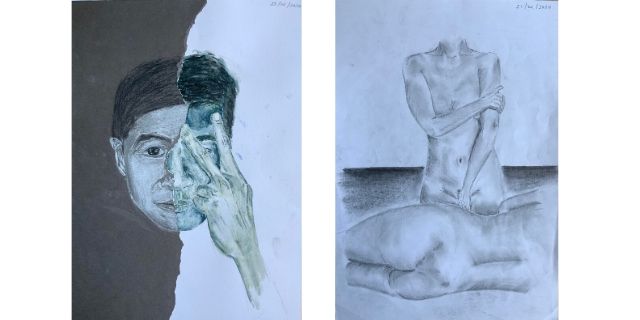Is the next da Vinci among our Biomed cohort?
How visual art is helping future doctors self-express and de-stress during the pandemic.
The symbiotic relationship between artists and anatomists dates back to the ancient Greek physician and anatomist Herophilus – widely acknowledged as the Father of Anatomy – (335-280 BC.).
Then there was Leonardo da Vinci, whose scientific drawings of the human body set him apart from any other artist of his time.
Fast forward to May 2020, in the midst of a global pandemic, and aspiring doctors – part-way through their Bachelor of Biomedicine – are drawing more than ever, says Dr Ann Holt, Lecturer at the Victorian College of the Arts.
“I think the basis of all cultural production is communication and during these times of isolation the role of culture has become amplified,” says the University’s Drawing with Anatomy teacher.
“The process of art making and self-expression not only enriches our relationship to ourselves as individuals, but opens our eyes to the world around us.”

Artwork by Danika Vuthy, a second year Bachelor of Biomedicine student and aspiring doctor.
This year, 127 Bachelor of Biomedicine students enrolled in fine arts subjects through Breadth – the University-wide initiative that allows students to gain knowledge and understanding across a broader range of disciplines outside of their undergraduate degree.
For Danika Vuthy, a second year Bachelor of Biomedicine student who plans to pursue Medicine, art has never been so important.
“This is a very stressful time for many of us, so art is my personal way of releasing stress. Although face-to-face classes are cancelled, I still try my best to draw myself and the people around me.”
Danika complete Drawing with Anatomy as her Breadth last winter and is now enrolled in Life Drawing.
“For someone like me who wants to become a healthcare professional, it is very unique to be able to study the human body from two completely different disciplines.
“As I draw from life models, it encourages me to see beyond the surface and try to understand the anatomical details of what is underneath the form.”

Study notes by third year Bachelor of Biomedicine student Joann Chan.
Joann Chan, a third year biomedicine student, has also been turning to visual art during this period of isolation.
“I find staying indoors for extended periods can be quite stressful, and so I use art to take breaks from my study while at home as it gives me a sense of purpose and comfort,” she says.
“I also keep a bullet journal to track my schedule during quarantine, and use it as a space to draw and paint in a more personal medium.
“Personally, I don’t consider my passion for art and sciences separate, because they often complement one another to make each aspect better.”
THE ARTISTIC AND SCIENTIFIC
Through the action of drawing anatomy, the mind’s eye discovers proportion, dimensions, volume, specific networks and nuances of the body, explains Dr Holt.
“Drawing Anatomy creates a roadmap of the body that can be encoded in memory in a profound manner.
“As drawing teaches you a heightened understanding of how to really observe and translate information, I hope that fostering these acute powers of observation will assist biomedical students to not only gain a deeper knowledge of anatomy, but also have a flow on effect in relation to the observational procedures involved in diagnostic medicine.”

Artwork by Nick Liew, Biomedicine and Drawing with Anatomy student.
For Nick Liew, also in second year and aiming for an MD or Physiotherapy place, Drawing with Anatomy is an invigorating way to study the human body.
“It has prompted me to look at body systems and organs both in detail and holistically. I also appreciate aspects like scale and appearance of the various specimens and life-models.
Utilising the University’s Harry Brookes Allen Museum of Anatomy and Pathology to study specimens was “absolutely breathtaking," says Nick.
“Drawing with Anatomy was a very refreshing subject – I didn’t have to use Newton’s Laws of Motion or describe the Electron Transport Chain in full!”
One thing is for certain, the relationship between art and science is alive and well in 2020 – and, while each can be totally engaging, challenging and occasionally frustrating, both disciplines lead to wonderful discoveries.
By Harriet Edmund